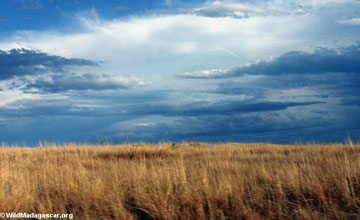Too many nutrients reduce biodiversity
Too many nutrients reduce biodiversity
mongabay.com
March 25, 2007
Too many nutrients can reduce the biodiversity of an ecosystem according to a grassland experiment conducted by University of Minnesota researchers. The research is consistent with findings in other parts of the world that suggest high nutrient abundance can increase the productivity of a few species, but limited overall species richness.
David Tilman, a professor of Ecology at the University of Minnesota, and Stanley Harpole, a former graduate student at the University of Minnesota, report in the March 25 online version of the journal Nature that “the reduction in species diversity occurs because increasing the amounts of limiting resources, such as nitrogen and water, makes an ecosystem more homogeneous and consequently reduces the number of opportunities for competing species to coexist. Put another way, it reduces the number of niches, allowing a few species to dominate.”
“In essence, the data in the article strongly supports a new explanation for why the world contains so many species,” said Tilman. “It shows that plant diversity is directly related to the number of limiting factors (such as soil moisture, nitrogen, phosphorous, potassium and water).”
 Grasslands. Photo by Rhett A. Butler |
Tilman and Harpole say the research helps explain why some ecosystems, that are polluted with nitrogen and phosphorous, usually from agriculture, have fewer species, like where the Mississippi River empties into the Gulf of Mexico.
Separately, similar patterns have been noted in the eastern Pacific Ocean and the Caribbean. Since the formation of the Panama land bridge some three to four-and-a-half million years ago, lack of nutrients in the Caribbean has triggered the rise of complex communities including coral reefs, while upwelling in the Pacific, which has brought a wealth of nutrients from the depths of the ocean, has produced a greater abundance of life but less species richness.
“Our results show that the loss of plant species from a habitat due to nutrient pollution can persist for more than 100 years,” Harpole said, referring to his grasslands study. “Thus human actions that simplify habitats can lead to long-term loss of biodiversity.”
Last year Tilman published a paper in Science that reported diverse mixtures of plants that mimic the native prairie ecosystem are a better source of biofuels than corn grain ethanol or soybean biodiesel
This article is based on a news release from the University of Minnesota